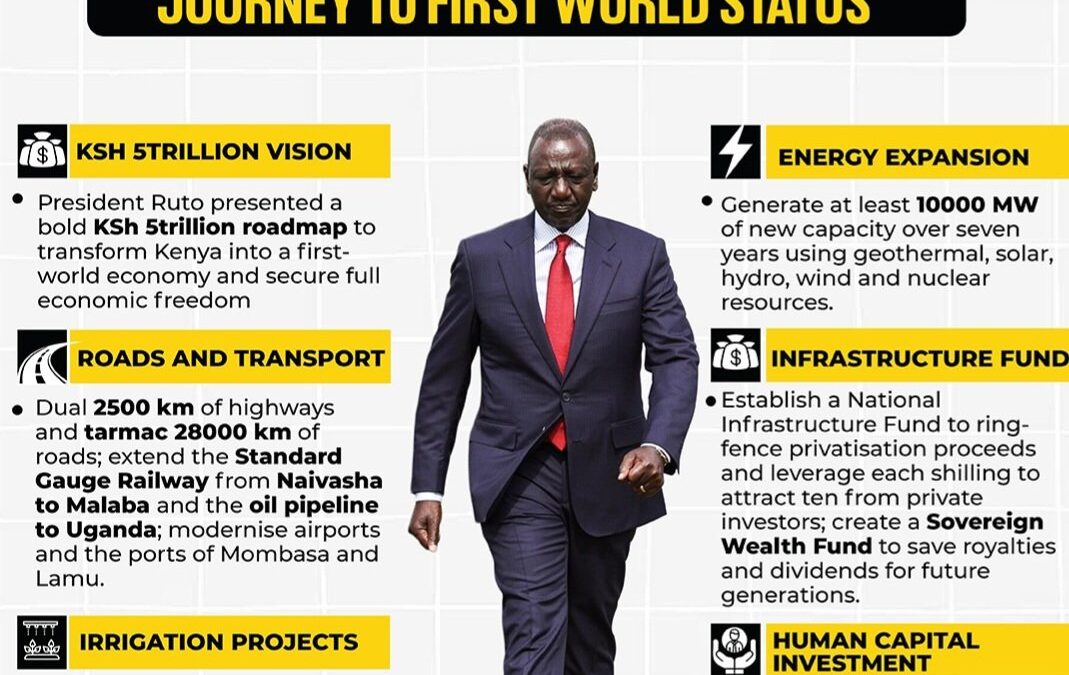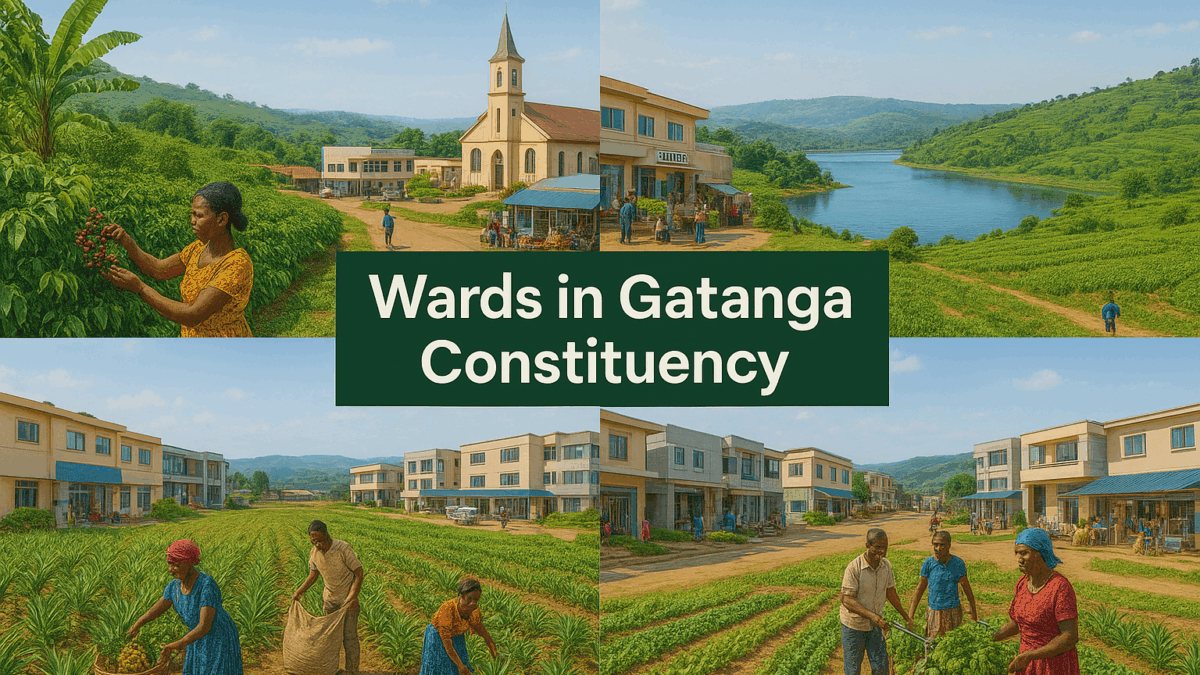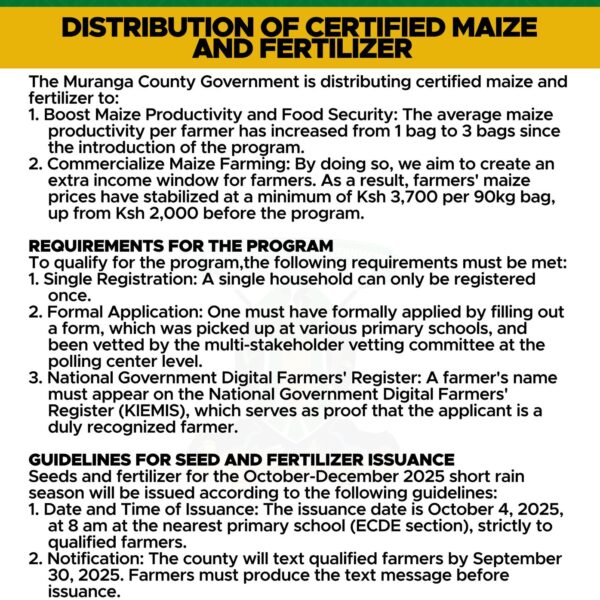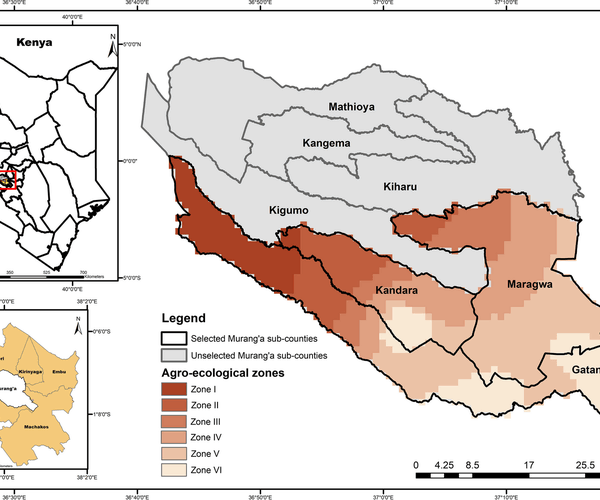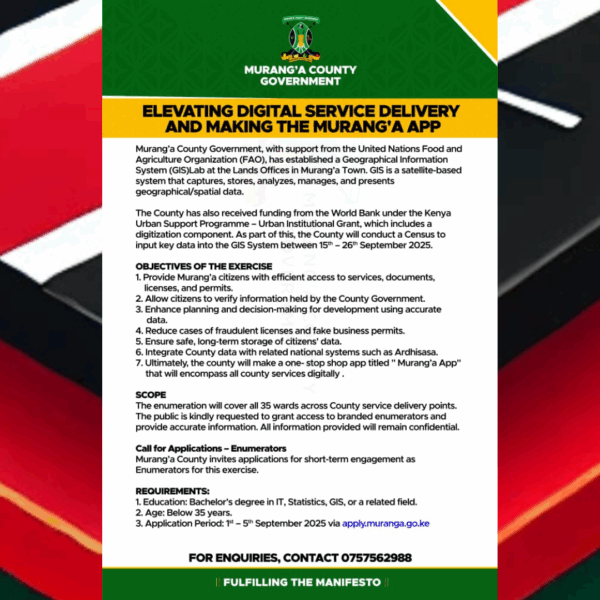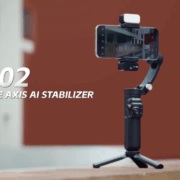Gatanga Constituency is one of the administrative regions of Murang’a County in Kenya. It is located in the southern part of the county and borders Kiambu County. The area is well known for its rich agricultural land, scenic landscapes, and vibrant communities. Understanding the wards in Gatanga Constituency is important because they form the basic units of governance and development at the local level.
List of Banks and Financial Institutions in Gatanga Sub-County.
In Kenya, wards act as electoral and administrative zones. They determine how resources are shared and how development projects are managed. Each ward has unique features, leaders, and priorities. Gatanga Constituency has six wards, and each plays a key role in shaping the social and economic life of the constituency.
List of Wards in Gatanga Constituency
Kihumbu-ini Ward
Kihumbu-ini Ward is among the most productive areas in Gatanga Constituency. It is famous for its coffee and tea farms. Farmers here also grow bananas and avocados, which supply both local and export markets. The ward has good road connections that link it to Thika and Nairobi.
Economy and Lifestyle
Residents benefit from schools, health centers, and vibrant markets. Youth groups are active, and many engage in agribusiness. In addition, women’s self-help groups run small enterprises that support families. Because of its fertile land, Kihumbu-ini attracts investors interested in agriculture.
Gatanga Ward
Gatanga Ward gives the constituency its name. It sits at the heart of the constituency and hosts the Gatanga Sub-County headquarters. The ward combines both rural and peri-urban features. It has a growing population because of its proximity to Thika town.
Social and Cultural Life
The ward has several learning institutions, shopping centers, and churches. Agriculture still dominates, with tea, coffee, and dairy farming as the main activities. Gatanga Ward is also known for its vibrant cultural identity. Traditional music and dance are part of community events. For visitors, the ward offers a peaceful rural environment with easy access to urban amenities.
Kariara Ward
Kariara Ward lies close to Ndakaini Dam, which is the main source of water for Nairobi. The ward is blessed with lush green hills, rivers, and cool weather. Tea farming is the main economic activity. The scenic beauty of this ward makes it attractive for eco-tourism.
Tourism and Events
Ndakaini Dam hosts an annual marathon that attracts participants from across the country. This event not only promotes sports but also raises awareness about water conservation. Local businesses thrive during this season, as visitors come to enjoy the event and the natural beauty of the area. Kariara Ward also has several schools and healthcare facilities that support community welfare.
Kakuzi/Mitubiri Ward
Kakuzi/Mitubiri Ward covers a large area. It includes vast pineapple plantations run by both small-scale and large-scale farmers. The ward is also home to industrial activities, especially near the boundary with Kiambu County.
Agriculture and Business
The community is diverse, with people from different parts of Kenya settling here. The ward has active markets that connect farmers to buyers from Nairobi and Thika. Infrastructure continues to improve, with better roads and communication networks. The ward also supports dairy and poultry farming, which provide income for many households.
Mugumo-ini Ward
Mugumo-ini Ward is known for its strong agricultural base. Coffee, tea, and dairy farming dominate the economy. Farmers have also embraced horticulture, growing vegetables and fruits for local consumption and markets in Nairobi.
Community Development
The ward has a strong education system, with several schools producing good academic results. Local leaders focus on youth empowerment by supporting sports and vocational training. Churches and community organizations play a major role in social development. Mugumo-ini is a ward that balances tradition with modern progress.
Ithanga Ward
Ithanga Ward lies in the lower part of Gatanga Constituency, near the border with Machakos County. The climate here is warmer and drier compared to the upper wards. Because of this, residents rely on irrigation to support farming. Crops grown include maize, beans, and horticultural products.
Growth Potential
The ward also has growing business centers that serve as trading hubs. Farmers bring produce to markets, while traders supply goods and services. Ithanga Ward has potential for growth in agribusiness and water management projects. The community is hardworking and committed to improving living standards despite the challenging climate.
Importance of Wards in Gatanga Constituency
The wards in Gatanga Constituency are more than just political zones. They are centers of development and community life. Each ward has its strengths and challenges. By working together, residents and leaders ensure that resources are fairly distributed.
Wards provide platforms for representation at the County Assembly of Murang’a. Members of County Assembly (MCAs) from each ward voice the concerns of their people. They also influence decisions on infrastructure, education, healthcare, and agriculture. This structure makes it possible for local communities to participate in governance.
Development Opportunities
Gatanga Constituency has many opportunities for growth. The fertile soils, reliable rainfall in upper wards, and irrigation in lower wards create a balanced agricultural economy. Tourism opportunities exist around Ndakaini Dam, the scenic hills, and cultural festivals. In addition, the proximity to Nairobi and Thika makes the area attractive for investors in agribusiness, real estate, and small industries.
Youth empowerment is another area of focus. Sports, education, and entrepreneurship programs are expanding across wards. Women’s groups continue to strengthen families through savings, microfinance, and farming projects. With improved infrastructure, all wards stand to benefit from increased trade and movement of goods.
Conclusion
The wards in Gatanga Constituency are Kihumbu-ini, Gatanga, Kariara, Kakuzi/Mitubiri, Mugumo-ini, and Ithanga. Each ward contributes to the identity and development of the constituency. They differ in geography, economy, and culture, but together they form a strong and diverse community.
By understanding the unique features of each ward, one can appreciate the potential of Gatanga as a whole. The wards are not only political units but also engines of progress. They provide opportunities for agriculture, business, education, and tourism. As Gatanga Constituency continues to grow, its wards will remain the foundation of development and community life.



